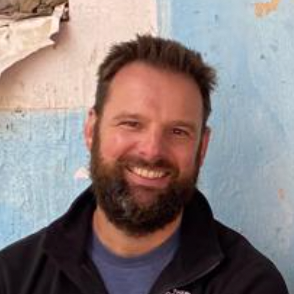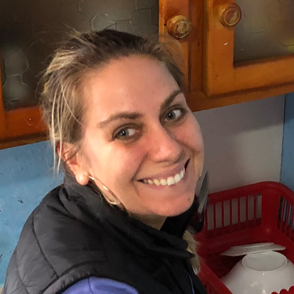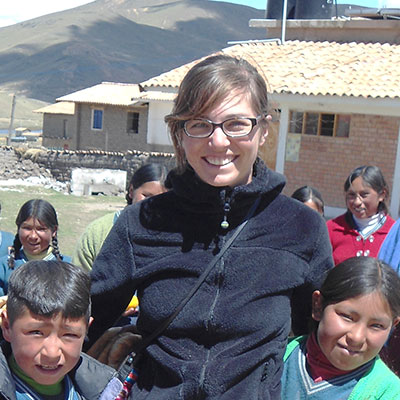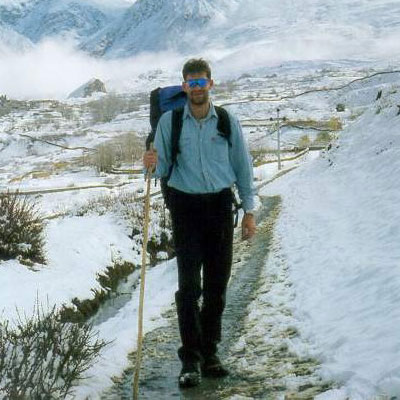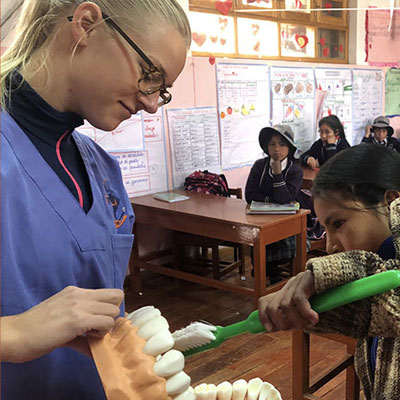Con Corazón
This is the name of our aid organization and means "with heart" in English. This attitude is at the heart of all our activities. Our humanitarian aid comes from the heart and this is what we stand for with our thoughts and actions.
Further information
Covid-19
Poor countries like Peru are very badly affected by the pandemic, setting them back decades in poverty fighting and school education. In relation to population size, Peru has the highest death rate in the world (June 2021).
Culture
Peru’s culture is a set of beliefs, customs and way of life inherited from the native Incas, Spanish conquistadors and settlers. Immigrant groups such as Africans, Japanese, Chinese and Europeans have also contributed to the society, blend of cultures and ways in which Peruvians live. Whatever their ethnic background Peruvians agree on the importance of family and religion. In many cases generations of a family live together where the younger look after the elderly and help each other in difficult times. Peruvians express their culture through their music, literature, art forms, dance, clothing, celebrations, religion, education, sports and clothing.
Community Projects
Because this will improve the quality, in the long term, for all people in the community. This will improve the quality of daily life and long-term environmental improvement for all people in the community.
Dental Treatment
Dentistry or dental medicine (stomatology) focuses on prevention, detection and treatment of diseases in the dental, oral and maxillofacial region. It is a comprehensive medical specialty and central to healthcare.
Further information
Donation
The organization finances operations and projects through donations. Therefore, we are dependent on corresponding support in order to be active on site. The canton of Aargau in Switzerland has approved that donations to Con Corazón are tax deductible.
Further information
Education
Education is the foundation for a better future. A solid basic education is not a matter of self-evidence in Peru. Con Corazón is working to improve the conditions in remote communities and to increase the right to education.
Empowerment
These are measures to increase the degree of autonomy and self-determination, so that people can take responsibility for changing their lives and further developing their way of life. In third world countries, this is an important basis for sustainable self-help to get out of poverty.
Further information
Health
Health in developing countries is an endangered good and cannot be taken for granted. Common causes of death in poor countries like Peru include diarrhea, pneumonia and many diseases of poverty that are little known in Europe. In rural areas, the population often has limited access to health care.
Further information
Malnutrition
Inadequate nutrition is very widespread in Peru. This exists in quantitative form as malnutrition and in qualitative form of a one-sided diet with insufficient nutrients. This weakens the body and leads to diseases.
Medical Center
The remote medical center at over 4,000 m.a.s.l. is the hub for Con Corazón's external health missions. Consultations and treatments are carried out there every two weeks
Further information
Microcredits / Microloans
Small loan recipients can start their own business thanks to microloan financing. In this way, these small entrepreneurs can lift themselves and their families out of poverty. Muhammad Yunus, the founder of the microfinance idea, was awarded the Nobel Peace Prize in 2006.
Further Information
Languages in Peru
Spanish is the official language in Peru. About 84% are native speakers of Spanish. 13% learn Quechua as their first language (3.2 million people). 1.8% have Aymara as their first language (435,000 people).
NGO
Con Corazón is a private non-profit organization that supports poor people in the Peruvian Andes on a donation basis and improves their quality of life. Health and education are a central aspect of our activities.
Respiratory Diseases
Traditional Peruvian cooking over an open fire poses a great health risk. This is because the smoke causes numerous respiratory diseases that shorten life expectancy. This is a major health problem, especially for women and children.
Peru
Peru is a country in South America. It is home to part of the Amazon rainforest and Machu Picchu, an ancient Inca city high in the Andes. The area around Machu Picchu, including the Sacred Valley, the Inca Trail, and the colonial city of Cusco, has numerous archaeological sites. The capital city is Lima, located on the arid Pacific coast of Peru, with a well-preserved colonial center and important collections of pre-Columbian art.
Further Information
Planetary Health
Planetary Health aims to take a holistic approach to the health of human civilization, taking into account the entire ecosystem. Because human health depends on functioning ecosystems, as well as the measures to maintain it. In this context, the production of energy and food plays a major role.
Further Information
Poverty
At the end of 2019, 6.6 million Peruvians, or just over 20% of the population, faced monetary poverty. Due to Covid-19, another 3.3 million have fallen into that category. As a result, around 10 million suffer from monetary poverty, almost a third of the total population. Another 11.2 million people are estimated to be "vulnerable" to poverty.
This means that currently around half of Peru's population is in poverty or in danger of falling below the poverty line. Almost 90% of the rural population is in this category. This takes into account not only monetary poverty, but a number of other dimensions of poverty, such as access to decent health and education services. (Source INEI)
Prevention
There is an evidence-based opportunity to reduce the economic and health burden of disease through preventive actions.
Health promotion and disease prevention programs focus on keeping people healthy. Health promotion programs aim to engage and empower individuals and communities to choose healthy behaviors and make changes that reduce the risk of developing chronic diseases and other morbidities.
It allows people to increase control over their own health.
Further Information
Religion
In Peru Christianity predominates, mostly Catholics. This religion arrived in Peru accompanying the conquerors and had an encounter with the Inca polytheistic religion, which produced a religious syncretism present throughout the country in various ways and magnitudes.
Sustainability
Great importance has been given to sustainability from the very beginning. Be it in relation to our activities or also in relation to the environment such as planting trees or avoiding plastic whenever possible.
Switzerland
The quadrilingual landlocked country with its approximately 8.6 million inhabitants is located in the heart of Europe. Similarities to Peru are the red and white national flag with the Swiss cross and the mountain world with the Alps.
Further Information
Taxes
The tax authorities of the canton of Aargau (Switzerland) have recognized Con Corazón, that donations to our aid organization are tax deductible. At the beginning of each year, corresponding donation receipts are issued for the attention of the donors.
Further information
United Nations
The United Nations (UN) is pursuing 17 Sustainable Development Goals (SDGS) through its "2030 Agenda". This is a global plan to promote sustainable peace and prosperity and protect our planet. Since 2016, all countries have been working to translate this shared vision for fighting poverty and reducing inequalities into national development plans. In doing so, it is particularly important to address the needs and priorities of the most vulnerable populations and countries - because only if no one is left behind can the 17 goals be achieved by 2030.
Further information
Volunteering
This is a volunteer assignment for locals and travelers with an organization that is charitable and often limited in time. Volunteers complete meaningful work assignments for the benefit of the local community. This is a great way to do something good and to "give back to the world".
Further information
Water
Access to drinking water and sanitation has improved in Peru in recent years, but there are still deficiencies in both public infrastructure and domestic facilities. Peru has 32 million inhabitants, 2.5 million people lack access to an improved water source and 5 million lack access to improved sanitation.


